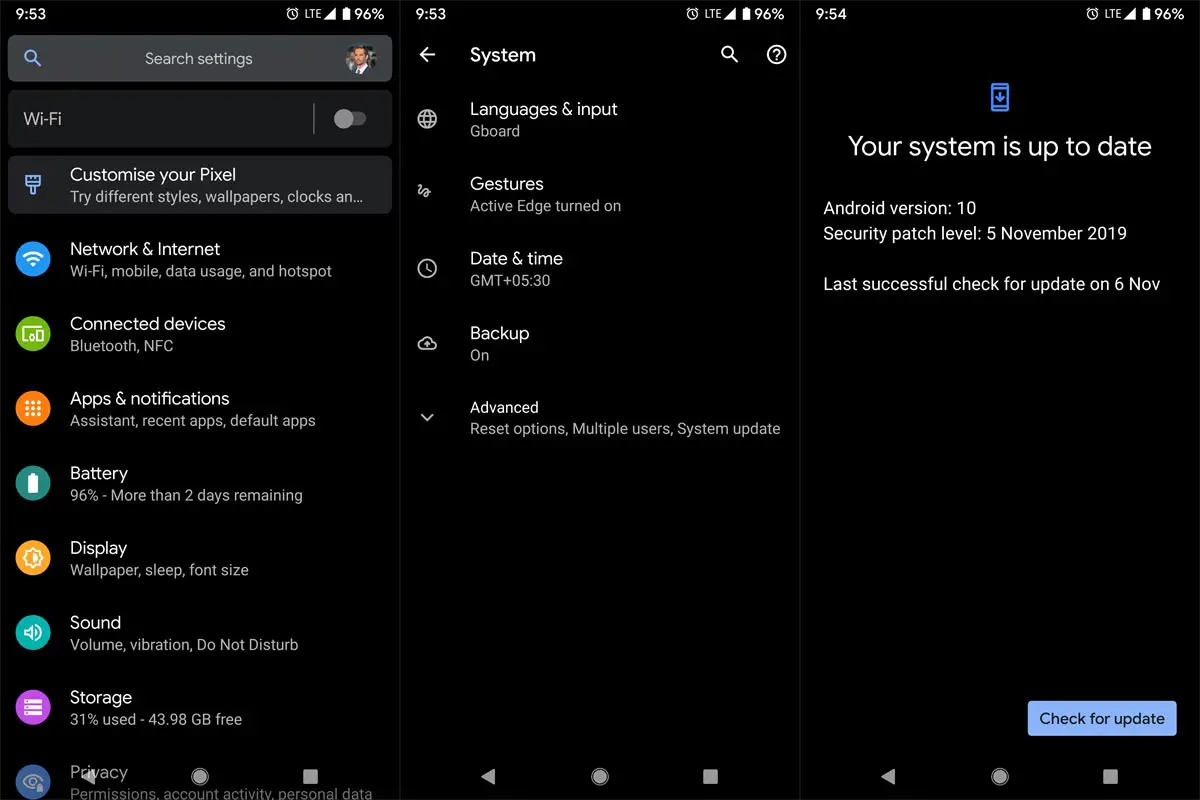Verizon is planning to build real 5G speed with its mmWave technology. The problem with this technology it can’t pass through long distances. Also, You need a mmWave antenna on your mobile. Verizon announced Real 5G technology meets a lot of real-time difficulties. In the meantime, T-Mobile launched Nationwide 5G with its low-band 5G. To compete against other carriers, most of the major carriers began to roll out low-band 5G first instead of mmWave 5G. Low band 5G can be accessed without any special configurations. Now Google Pixel 5 users access Verizon Nationwide low-band 5G. It means you will receive high speed 5G in available areas and low-band 5G in other areas.
![]()
Google released the software updates for Pixel 4a 5G and Pixel 5. These updates are two weeks late as per schedule, but it will enable both the phones to use the Verizon 5G Nationwide network in more than 1800 cities with selected models.
Why you need a Verizon Nationwide low-band 5G in your Google Pixel 5 when having mmWave?
The Pixel 5 and Pixel 4a 5G from Verizon were launched as 5G phones, and they could access the 5G Ultra band network by Verizon. In fact, this 5G connectivity with mmWave is also a limitation for these phones. The 5G ultra band or mmWave is limited to availability. The mmWave cannot go for long distances and also cannot penetrate walls and Windows. The range of mmWave is only 150 meters, and its 24GHz and 28Ghz waves cannot transmit through window glass. It means to enjoy this ultra-high-speed, you have to stay Infront of the mmWave tower without any hurdle in between.
How to get Verizon low-band 5G in your Google Pixel 5?
![]()
With the new November 2020 software update, you will use the 5G Nationwide network when you are out of the 5G coverage. The 5G Nationwide uses the DSS or Dynamic spectrum sharing that uses the Verizon resources for optimal use. You remain the 5G icon on your status bar and using the Sub-6 5G with maximum resources.
How DSS helps you to use Verizon Resources?
If Verizon has a 24GHz spectrum, it has to divide it equally for 4G LTE, Sub-6 5G, and wideband mmWave. As 5G users are not much compared to 4G, a lot of spectrum goes waste. With DSS, the operator doesn’t need to divide the spectrum equally; instead, it uses the AI and machine learning technology to share the available spectrum as per need. It means sub-6 5G will get the maximum bandwidth from Verizon’s available spectrum instead of just a portion.
Speed Comparison Of 5G and 5G DSS
Verizon 5G’s average speed is 792.5Mbps, while the sub-6 5G has a speed between 100-400Mbps. When you are out of the 5G coverage reach, DSS shifts you on Sub-6 5G while using the maximum resources. Although you will not get that ultra-speed of 5G with DSS, you will get the improved latency rate as you get in 4G. But T-mobile already achieved 1Gbps in its mid-band 5G.
Which models will get a low-band 5G Update?
Only the selected Google Pixel 5 and Pixel 4a 5G models can simultaneously use the Sub-6 5G and mmWave. These models include Pixel 5 GD1YQ (US) and Pixel 4a 5G G6QU3 (the US only, Verizon only).
How to Get this Update?

It is a system update, and you will get it automatically. If you still do not get this update, you can go to Settings > System > Advanced > System update.
Remember, only the phone mentioned above will get this update as Android 11 build RD1B.201105.010.
Wrap Up
It is great news for Pixel mobile owners to get the 5G Nationwide low-bands access. Everyone is selling the 5G phone, but no one says that it requires ideal situations to use this ultra-high-speed network. Those who buy a new 5G phone get disappointed when they do not get that dream speed. So, this low-band spectrum will be a great relief for those disappointed phone buyers. Like Verizon, AT&T already rolled out the Nationwide 5G. But when you want to access top speed, You still need a special mmWave antenna mobiles. Unlocked mobile flawless 5G access is still questionable. Carriers need to consider those situations too. Did you try Verizon low-band 5G in your Pixel 5? Do tell us your experience in the comments below.

Selva Ganesh is the Chief Editor of this Blog. He is a Computer Science Engineer, An experienced Android Developer, Professional Blogger with 8+ years in the field. He completed courses about Google News Initiative. He runs Android Infotech which offers Problem Solving Articles around the globe.



Leave a Reply